Below is the companion post to Episode #62 of the podcast, which features Kara’s discussion with Amber about the red-shroud mummy of Herakleides. The podcast episode and this post can be enjoyed independently, but like good company and good wine, we think they are best paired together. And now that we are hosting the “Afterlives of Ancient Egypt” podcast on Substack, you can listen to the episode right here—just click the link above!
Becoming a god—the mummified ibis in the mummy of Herakleides
EPISODE 62 | CW// Human remains
The red-shroud mummy of a young man named Herakleides—don’t ask us how he died so young; we don’t know—presents some tantalizing insights into certain religious practices of the first century CE in Egypt. On view at the Getty Villa in Malibu, the mummy of Herakleides is unprovenanced, but archaeological evidence suggests it probably comes from el-Hibeh (near the Fayum). The mummified remains of Herakleides are wrapped in a linen shroud painted from head to toe in a red pigment derived from red lead imported from Spain, making it part of a group of portrait mummies known as “red-shroud mummies.” In the early 2000’s Getty conservators and other experts conducted research on the mummy of Herakleides. Their analysis (Svaboda and Walton, 2010; Corcoran and Svaboda, 2010) included scientific methods to determine what pigments and materials were used in the surface decoration of Herakleides’ mummy and a CT scan to see what they could learn about him from his remains through non-invasive imaging technology. To their surprise, the images revealed a mummified ibis at the abdominal area, purposefully and carefully wrapped within Herakleides’ mummy wrappings.
The red-shroud mummy of Herakleides was the first known case of an animal mummy ensconsed within a human mummy’s wrappings (Corcoran & Svaboda 2010, 71). It was an exciting discovery, but it immediately posed a mystery and raised questions about why an ibis mummy would be wrapped in with a human mummy. Since there are no surviving primary texts to provide us with detailed insights into the cult practices that produced red-shroud mummies as part of its burial customs, we are left to speculate the why behind the mummified ibis, and that’s exactly what we’d like to do here. To be honest, that’s often what Egyptology is: engaging in knowledgeable extrapolation and discussion based on (very) limited evidence. While acknowledging that Herakleides lived at a time in which Egyptian, Greek, and Roman cultural and religious elements were intermingling in various complex ways and that we can never know what we don’t know, the red-shroud mummy of Herakleides provides us with the opportunity for some fascinating evidence-based insights into the religious practices that surrounded his death.
So what can we make of this mummified ibis wrapped in the red shroud with Herakleides? We have plenty of evidence for the practice of animal mummification in earlier periods of ancient Egyptian history, but it is only in this red-shroud type of mummy from the first century CE that we find a mummified animal placed within the mummy wrappings of a person. In fact, of all the documented red-shroud mummies, only two males—Herakleides and the red-shroud mummy of another male in the Antikenmuseum und Sammlung Ludwig, Basel, Switzerland—have a mummified ibis within their wrappings. This evidence suggests that including a mummified ibis was likely a practice within the particular time period, religious cult, and geographic region that produced these mummies and that the inclusion of the mummified ibis could play a part in the funerary rituals and rites for males. (None of the surviving red-shroud mummies of females have mummified ibises wrapped within their shrouds.) The evidence may be limited, but questions abound. What were the reasons for including a purposefully sacrificed and carefully mummified ibis with the corpse of this young man? Does the presence of a mummified ibis indicate that these were males of a particular professional, social, and/or cultic status? In ancient Egyptian religion the ibis was associated with the god Thoth, so it is assumed that red-shroud mummies were in some way related to that particular cult. Thoth was the god of scribes and writing, so it has been suggested that the mummified ibis might signify a man’s profession or status as a worshiper of Thoth (Corcoran & Svaboda 2010, 71).
The presence of an ibis mummy within the wrappings of Herakleides’ mummy suggests he belonged to a cult of Thoth, but was it also a mark of his profession or cultic affiliation and status? To get beyond any superficial explanations, we need to delve into the deep cuts of Egyptian mythology and religious mystery that surrounded Thoth. The ibis was considered one of the physical manifestations of the god of writing, archiving, and wisdom. Egyptian religious tradition held that Thoth was the god who gave humanity writing, providing them with the very means to record and transmit knowledge—and therefore magic, since hieroglyphs were seen by ancient Egyptians to be effective visual manifestations of religious-magical power. Thoth was a god of scribes, but he was also associated with magic, healing, knowledge, and wisdom. During the lifetime of Herakleides in the Roman period, Egyptian religion was already considered ancient—it was thousands of years old by the first and second centuries CE when Roman power and influence reached the Nile valley. The perceived power in the very antiquity of ancient Egyptian religion was thought to preserve lost knowledge and arcane truths about the secrets of the universe. Learning the mysteries of life and death added to Thoth’s appeal. We know that Thoth had popular and active cults during the Roman period when Herakleides lived. Perhaps the family of this young man thought the inclusion of the animal mummy would help this young man gain much-needed knowledge of the universe, life, and death and ultimately obtain eternal life. An animal mummy gave you that little extra leg-up in social afterlife negotiations!
The core belief behind the practice of embalming was that a person’s mummy—supported by all the the religious iconography, amulets, and other funerary equipment (like a mummified ibis), etc. —would rise again, ensuring the deceased’s safe journey and transformative entrance into the afterlife. With this well-established tenant in mind—that the physical was needed to gain immaterial presence—we see that that the ibis was as a special divine companion, a protective little bird god, meant to aid his transition into the afterlife. Placing a ritually prepared physical manifestation of the god in such close contact with Herakleides’ vessel of rebirth (i.e. practically cuddled onto the belly of his mummy) created an intimate personal connection between himself and the god—a connection that would lend additional creative potentiality to his mummy, supercharging its effectiveness as a tool of rebirth, and propelling him safely through his transition from life on earth to an eternal life after death.
What is more difficult to determine is a more precise functionality of the mummified ibis beyond this basic funerary belief. Did the animal mummy carry particular wishes and prayers of his grieving family members? Was the mummy verbally activated with magical spells to aid the young Herakleides? Did it have a particular religious meaning? Without written primary sources, here we are at a loss. But we’ve come this far, so why let that stop us (she said, cheerfully)? Presuming a connection between red-shroud mummies like that of Herakleides and the cult of Thoth, and taking into consideration that the mummified ibis was a talisman aimed at facilitating Herakleides’ rebirth, let’s examine the religious-magical function related to the creation story of Thoth in the egg, the ultimate creator-god born at the dawn of all things according to the Hermopolitan creation myth. Such connections are irresistible for Egyptologists. Did the mummified ibis, implanted like an egg within the shroud of Herakleides, coated in red—the color of the reborn sun that rises each morning and of the bloody fluids of child birth—allow him to become one with the divine Thoth and be reborn through him? Did Herakleides believe he could become a divine eternal being himself in the afterlife by virtue of this sacred merging?
Maybe. But we’d hate to speculate (or would we?). These are just some of the questions we consider in this Artifact Stories podcast episode. Click the link above to to hear more musings, including thoughts about the ethnicity of Herakleides, mummification in Roman period Egypt in general, and what it was like to live in a hybrid Roman-Greek-Egyptian society.
There is so much more to explore about the red-shroud mummy of Herakleides. Check out the links below to two videos produced by the J. Paul Getty Museum to learn more about Herakleides and his mummy.
Bibliography

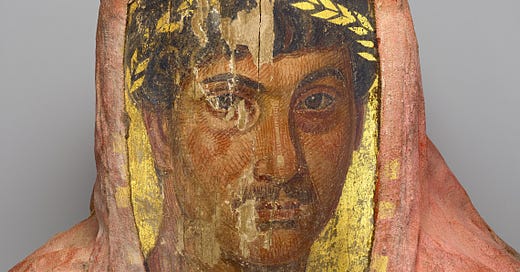




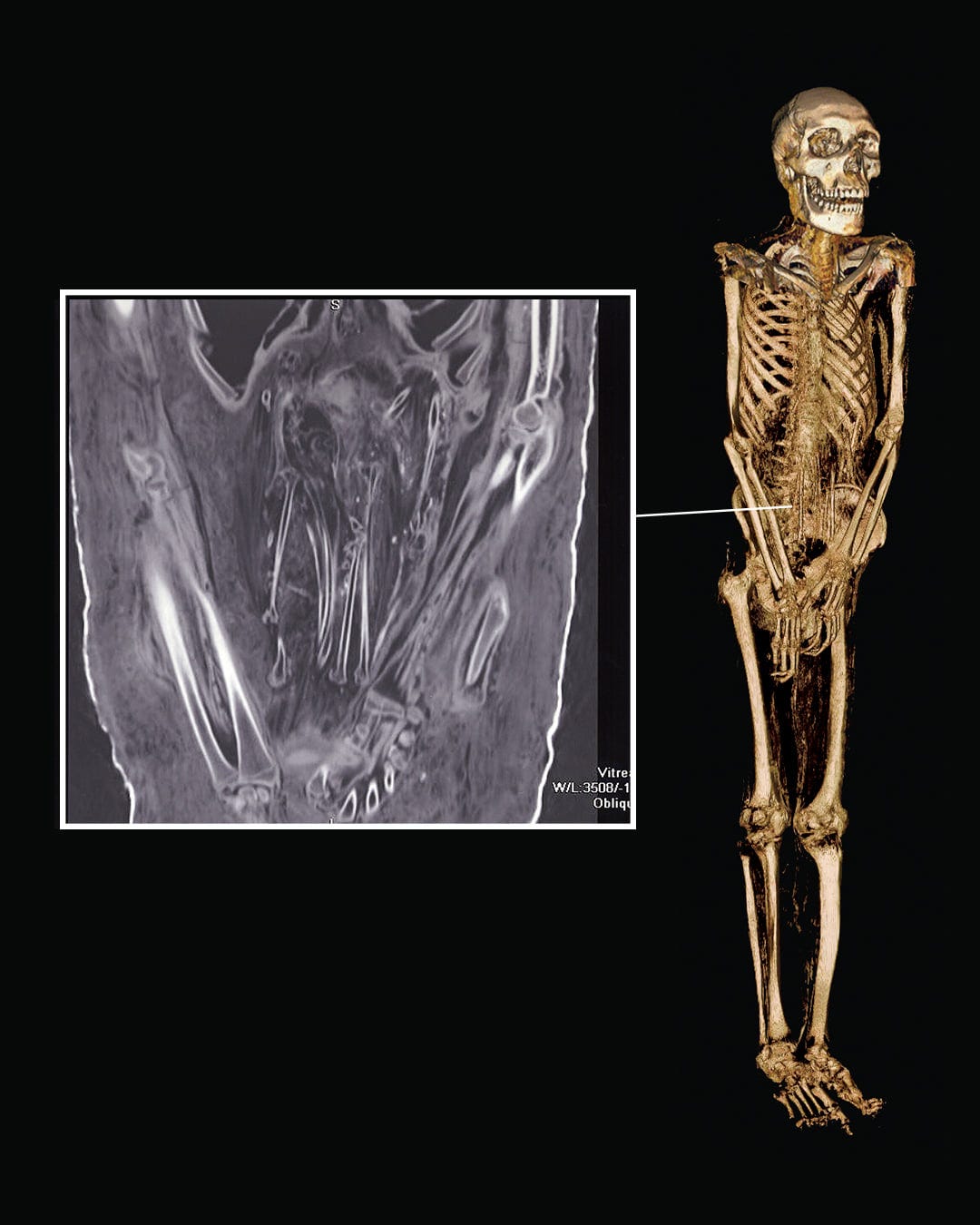
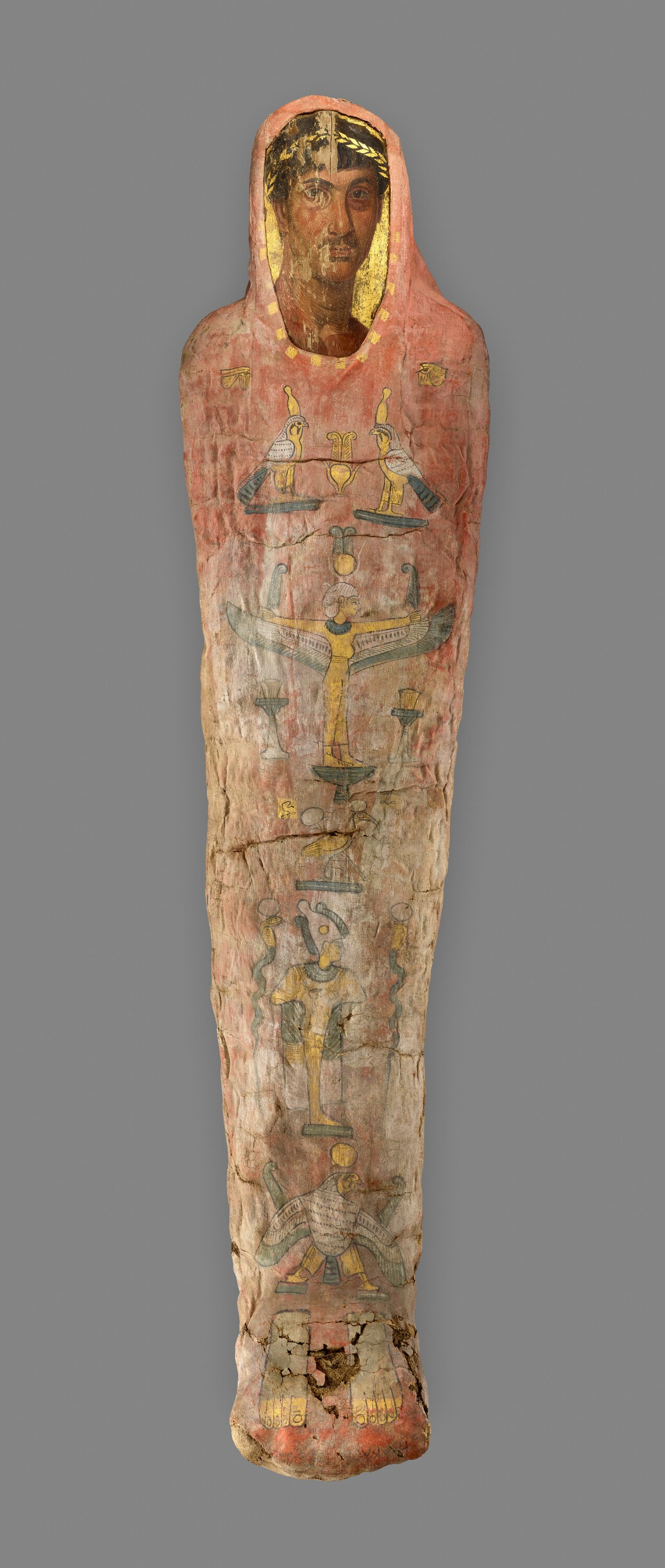


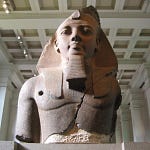

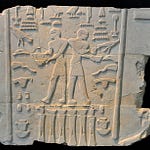





Share this post